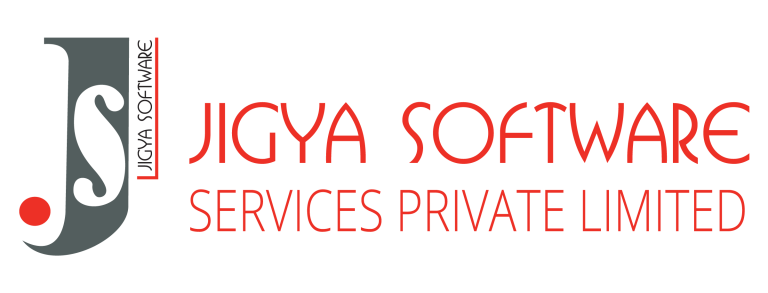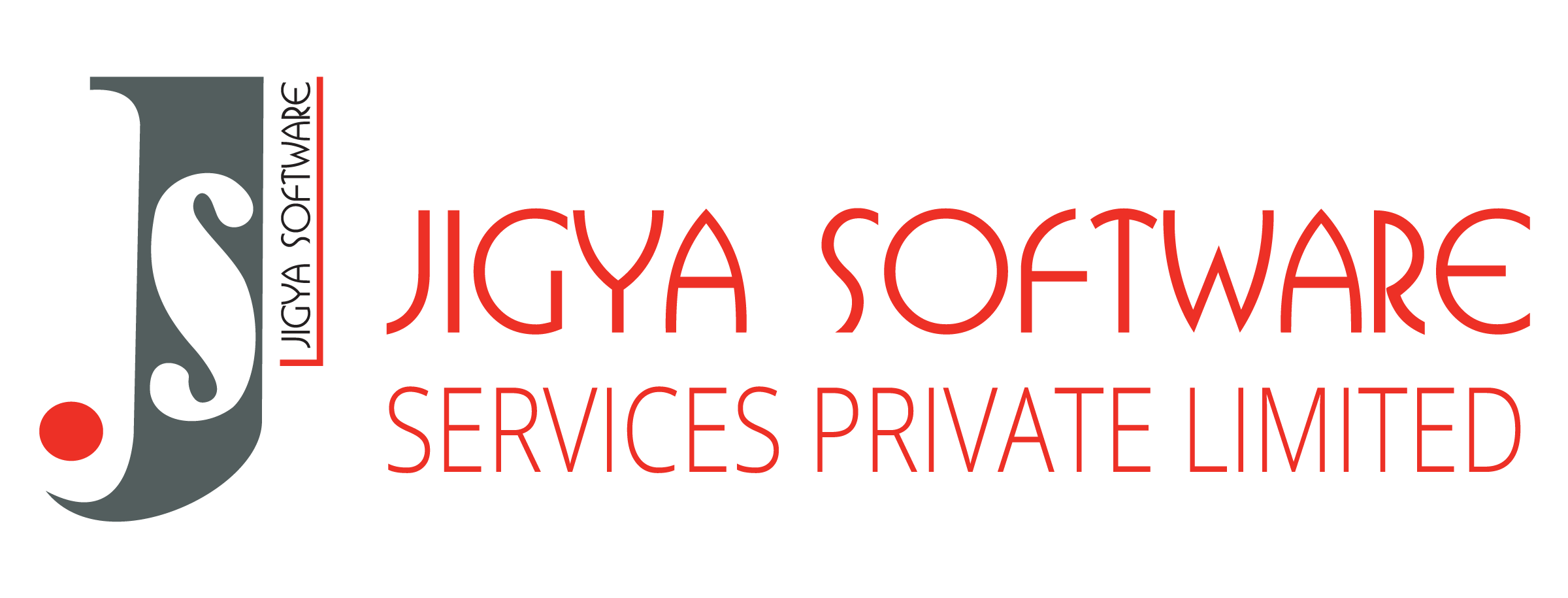In today’s competitive business environment, characterized by demanding customers and a challenging hiring landscape, maximizing employee performance is essential for sustained growth. An effective performance management process plays a critical role in achieving this goal. Traditionally, businesses have relied on various methods to manage employee performance like HRMS, PMS, EMS, etc.. However, modern Performance Management Systems (PMS) offer a comprehensive and advanced framework for tracking, monitoring, and improving individual and overall organizational effectiveness. Jigya Software Services’ PMS offers the agility and the modernization that best Performance Management Systems must have.
Agility and Adaptability in a Dynamic Market
A key benefit of performance management systems is their ability to enhance an organization’s agility and responsiveness. By enabling the creation of clear, cascaded objectives, from top-level goals to individual tasks, PMS ensures that every employee’s efforts contribute directly to achieving the organization’s strategic vision. This alignment fosters a culture of progress and ensures the entire team is moving in the right direction.

What is PMS?
Real-time Data and Automation
Unlike traditional annual or bi-annual evaluations, a PMS continuously collects performance data. This real-time information allows managers to track KPIs, automate essential review tasks, and gain crucial insights for timely decision-making. This enhanced visibility empowers managers to address challenges and optimize outcomes throughout the performance cycle.
Centralized Insights and Intuitive Design
A PMS provides a central dashboard where managers can access key metrics like Balanced Scorecards, KPIs, Reviews & Ratings, BARS data, and more. Built-in analytical tools offer instant insights with just a few clicks, enhancing the overall user experience. This simplified, data-driven approach saves time and effort, leading to more effective performance management strategies.
Proactive Decision-Making using PMS
The real-time data and automated analysis provided by a PMS enable managers to set triggers for notifications and alerts. This proactive feature means constant updates for all relevant users. Armed with this accurate, up-to-date performance information, managers can quickly identify problem areas, make timely adjustments, and guide employees to achieve performance goals.
A Necessity for Modern Performance Management
Effective performance management in today’s world hinges on robust technological solutions. That’s where a PMS excels, providing businesses with the convenience, insight, and adaptability to excel. These systems seamlessly integrate with a multitude of performance management methodologies, empowering organizations around the world.

What PMS can DO?
Goal-Setting and Strategic Alignment
Establishing clear goals and objectives lies at the heart of effective performance management. A Performance Management System (PMS) assists organizations in defining realistic targets, cascading them down to individual employee levels, and ensuring alignment with overall business strategy. Goals and objectives form the foundation for measuring the performance of individuals, teams, departments, managers, and the company as a whole. Let’s explore three common types of goals supported by a PMS:
- Purpose-Oriented Goals: These goals specify what constitutes success for each employee and establish corresponding key performance indicators. Continuous monitoring ensures goals remain relevant. For instance, a target of maintaining customer satisfaction at or above 80% falls into this category.
- Project-Based Goals: These goals concentrate on specific project outcomes and timelines, impacting both individuals and project teams. An example would be a goal for the IT team to develop and launch a new mobile application within a three-month timeframe.
- Employee Personal Development Goals: These goals promote employee growth by outlining the skills, abilities, and knowledge they must acquire to enhance their performance.
While goals represent long-term aspirations, objectives are measurable short-term actions necessary for goal achievement. Clear communication of goals and objectives to employees is essential. This transparency allows them to set performance targets and strive for improvement in subsequent cycles, leading to gradual, sustainable performance optimization.
Facilitating the SMART Approach for Effective Goal Setting
The SMART framework offers a contemporary and structured approach to defining impactful goals and objectives. When implemented effectively, SMART goals are known to yield optimal results. Let’s break down the acronym:
- SMART – Specific: Goals must be well-defined and specific, leaving no room for ambiguity or misinterpretation.
- SMART – Measurable: Goals should generate quantifiable data, enabling the tracking of progress and performance.
- SMART – Achievable: Goals must be attainable. Setting overly ambitious targets can demotivate employees, undermining success.
- SMART – Realistic/Relevant: Goals should be realistic and align with the capabilities and responsibilities of individuals and teams.
- SMART – Time-bound: Each goal requires defined start and end dates, providing employees with a clear timeline for accomplishment and evaluation.
Providing employees with SMART goals fosters focus and promotes professional development. In the absence of well-structured goals, employees may feel directionless and lack a sense of progress, potentially leading to job dissatisfaction and increased turnover. Achieving goals that enhance their skills and experience motivates employees and drives further improvement.
A Performance Management System (PMS) can play a vital role in implementing and tracking SMART objectives within an organization.

Transforming the Performance Review Experience
Traditional performance reviews have limitations, with many employees expressing concerns about potential bias and inaccurate evaluations based solely on recent events. Studies underscore these flaws. Since 2010, numerous large enterprises have moved away from traditional review processes, seeking greater accuracy and transparency. Today, the adoption of performance management systems is accelerating across organizations of all sizes, seeking a competitive edge. For instance, Jigya Software Services offers clients a range of solutions like HRMS, PMS, EMS, and more, designed to help businesses thrive.
While outdated review methods may falter, the performance review itself remains a valuable tool. A robust Performance Management System (PMS) transforms this process, facilitating constructive feedback, accurate performance insights, and enhanced communication between managers and employees. The primary goal of a digital PMS is to make performance reviews more meaningful. By highlighting an employee’s accomplishments and identifying areas for growth, motivation and engagement levels rise. Employees become invested in improving their skills, knowledge, and workplace contributions.
Maximizing Employee Potential with 360 Degree Feedback and PMS
360-degree feedback represents a cornerstone of modern performance management, promoting employee engagement, motivation, and continuous improvement. By collecting feedback from multiple sources – managers, peers, subordinates, customers, stakeholders – this method paints a comprehensive picture of an employee’s strengths and areas for development. Let’s examine the key components:
- Managerial Feedback: While this represents a traditional aspect of performance reviews, its value remains. Input from supervisors, line managers, and higher-level personnel offers insights into employee performance.
- Peer-to-Peer Reviews: Colleagues provide a unique perspective on an employee’s work habits and ability to collaborate effectively within teams.
- Customer Reviews: Feedback from internal and external customers illuminates the performance and behavior of client-facing employees.
- Subordinate Feedback: Though less common in traditional methods, upward feedback offers invaluable insights for evaluating and improving the performance of supervisors and managers.
- Self-Appraisals: This component encourages employee reflection. While potentially biased, self-appraisals empower individuals to identify strengths and weaknesses within a structured PMS environment.
By fostering transparency and a well-rounded understanding of employee contributions, 360-degree feedback acts as a catalyst for engagement and awareness. Employees gain clarity on expectations, performance, and stakeholder impact. This process also informs training, counseling, and employee development initiatives. A PMS amplifies the benefits of 360-degree feedback, making it a potent tool for boosting employee motivation and maximizing potential.
Facilitating a Successful Management by Objectives (MBO) Approach
Management by Objectives (MBO) is a contemporary performance management framework that can be seamlessly integrated with a Performance Management System (PMS). The initial stage of MBO involves collaboration between managers and employees to establish clear, measurable objectives aligned with broader organizational goals. This alignment is crucial for success.
Throughout the performance period, managers and employees engage in regular discussions to track progress and assess ongoing performance against the defined objectives. If needed, adjustments can be made to ensure goals remain relevant and achievable within the larger company strategy. This adaptability is a key strength of the MBO process and a PMS enhances this further.
MBO fosters an environment of employee engagement and trust, as individuals feel empowered through their involvement in the goal-setting process. A PMS amplifies this effect, providing a dedicated platform for efficient implementation of MBO across an organization.
By prioritizing SMART goals, the MBO model sets clear expectations. Employees understand both what is required of them and the best ways to accomplish their objectives. When employees are emotionally invested in the goals they helped create, motivation rises. Frequent assessments, enabled by a PMS, maintain focus throughout the performance appraisal period, contributing to the high success rate associated with MBO.

PMS Enhances the Behaviorally Anchored Rating Scales (BARS) Process
The Behaviorally Anchored Rating Scale (BARS) is a widely used performance management method that assesses both quantitative and qualitative aspects of employee performance. Within the BARS framework, managers define behavioral examples and link them to a numerical rating scale. These specific BARS statements describe observable actions and serve as a benchmark for evaluation, promoting clarity around job expectations.
Market research emphasizes the significance of behavioral assessment within performance management, suggesting that behavior can account for up to 40% of an employee’s overall performance. Individuals are evaluated according to predefined behavioral standards associated with their specific job roles. The process of refining BARS statements demands careful consideration to establish appropriate standards.
BARS excels in communicating expectations to employees, leading to improved performance as they strive to align with outlined goals. The rating scale typically ranges from 5 (representing unsatisfactory performance) to 9 (signifying exceptional performance). This differentiated approach, customized for various job roles, leads to a more accurate and impactful performance management process. Employees gain a clearer understanding of areas for improvement and the behaviors required for success in subsequent performance cycles.
While effective, BARS implementation can be time and resource-intensive for managers and administrators. A Performance Management System (PMS) can significantly streamline this process, providing tools to define BARS statements, track employee performance against those standards, and generate insightful reports.
Refining KPIs for Enhanced Performance Monitoring
A Performance Management System (PMS) provides a robust platform for creating precise Key Performance Indicators (KPIs). These KPIs can be tailored for individuals, teams, departments, and the entire organization, promoting alignment with strategic goals. By integrating with other software and databases, a PMS enables a data-driven approach to performance management that links strategic objectives directly with individual actions.
One effective KPI implementation method within a PMS is the cascading model, also known as the pyramid structure. This top-down approach aligns individual KPIs with broader organizational goals. Applying the SMART framework ensures each KPI is specific, measurable, attainable, relevant, and time-bound. A PMS often offers a combination of customizable KPI creation tools and built-in templates for efficiency.
Real-time monitoring powered by well-defined KPIs is a significant advantage for businesses. Managers can use these metrics to communicate expectations and evaluation criteria clearly, fostering a culture aimed at exceeding goals.
Conclusion:
In today’s dynamic business landscape, traditional performance management approaches often fall short. A Performance Management System (PMS) provides the technological backbone businesses need to optimize their processes, streamline evaluation efforts, and align goals across the entire organization. This dedicated software solution addresses shortcomings of outdated systems, allowing for tailored features to suit specific business requirements.
A PMS empowers employees and managers alike. User-friendly dashboards offer real-time insights into individual, team, and organizational performance. This transparency fosters accountability and provides the data necessary for informed course correction and strategic adjustments, ensuring alignment with overarching company objectives.
While this blog highlights key advantages of a PMS, its potential benefits extend far wider. If you’re seeking a modernized, cost-effective approach to performance management, HRMS solutions, or other technology consulting services, please don’t hesitate to reach out. Contact us via our ‘Contact Us’ page or comment below – we’re ready to assist you in transforming your performance management strategies.
Jigya Software services is an Orpine group company. Our vast experience comes from working across industries – retail, banking, manufacturing, pharmaceutical, healthcare, and more. With over 200 IT Consultants on staff and $25 million in annual revenue, Jigya has the capacity to meet any of your business needs.


